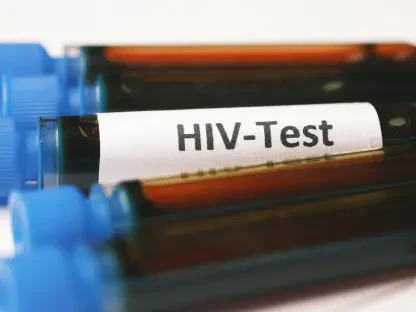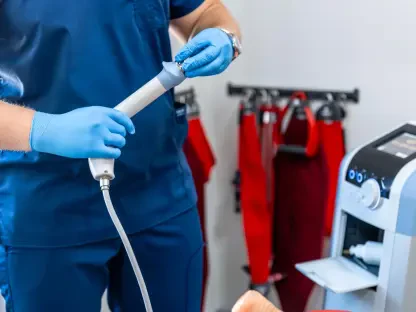In a nation where access to quality healthcare remains a pressing challenge, Nigeria’s recent efforts to strengthen primary healthcare in Gombe State stand as a beacon of hope for millions, particularly for women, children, and vulnerable communities who often face the brunt of inadequate medical services. This initiative, driven by the Federal Government under President Bola Tinubu’s Renewed Hope Agenda, focuses on equipping primary health centers with essential medical tools and supplies to address critical health needs. Gombe State has emerged as the starting point for a broader national strategy aimed at revitalizing healthcare delivery across all 36 states. The collaboration between federal and state authorities showcases a unified commitment to improving health outcomes, with a special emphasis on maternal and child health. As this program unfolds, it offers a glimpse into how targeted interventions and partnerships can transform the landscape of primary healthcare, ensuring that even the most remote communities receive the care they deserve.
Federal Support and National Vision
The Federal Government’s intervention in Gombe State marks a pivotal moment in Nigeria’s journey toward a stronger healthcare system. During a significant handover ceremony in Gombe, the Coordinating Minister of Health and Social Welfare, Prof. Muhammad Pate, articulated the importance of this support as a complement to the state’s existing efforts. The initiative is not a standalone act but part of a nationwide plan under President Tinubu’s agenda to enhance primary healthcare delivery. Prof. Pate emphasized that while Gombe serves as the initial focus, the program is set to expand across the entire country, reflecting a comprehensive vision for health system improvement. This federal backing aims to ensure that primary health centers are not just operational but also capable of addressing the urgent needs of local populations, particularly in underserved areas. By aligning with state-level initiatives, the federal strategy seeks to create a seamless framework for sustainable health improvements, setting a precedent for other regions to follow.
Beyond the symbolic gesture of the handover, the federal support brings tangible resources that promise to reshape healthcare access in Gombe State. The emphasis on collaboration highlights a shared responsibility between national and local governments to tackle systemic challenges. Prof. Pate commended the state’s dedication, noting its investments through mechanisms like the Primary Healthcare Development Agency and the contributory health scheme known as Go-Health. These efforts have already laid a foundation for expanded access to quality care, and the federal intervention is designed to amplify their impact. The focus remains on vulnerable groups, ensuring that women and children, often the most affected by inadequate healthcare, receive prioritized attention. This synergy between federal resources and state commitment underscores a model of governance that could inspire similar partnerships elsewhere, driving a collective push toward health equity across Nigeria’s diverse regions.
State-Level Commitment and Collaboration
Governor Inuwa Yahaya of Gombe State has expressed profound appreciation for the federal support, recognizing its alignment with the state’s ongoing health reform agenda. This gratitude underscores the timely nature of the intervention, which comes as Gombe has been actively working to revitalize its healthcare infrastructure. The state has already made significant strides, including the refurbishment of 114 health centers and the recruitment of additional health workers to bolster service delivery. Governor Yahaya highlighted how these local efforts are now being fortified by federal resources, creating a powerful partnership aimed at addressing longstanding gaps in primary healthcare. The collaboration serves as a testament to the potential of combined governmental action, where shared goals translate into meaningful progress for communities that have historically struggled with access to basic medical services.
Furthermore, the state’s proactive approach to healthcare reform provides a strong foundation for the federal initiative to take root effectively. The integration of federal supplies and equipment into Gombe’s existing framework ensures that resources are not wasted but strategically deployed to meet pressing needs. The state’s focus on building a robust workforce and modernizing facilities complements the influx of medical tools, creating a holistic environment for improved health outcomes. This partnership also sets a benchmark for accountability, as both levels of government are invested in monitoring the impact of these interventions. By prioritizing the needs of rural and underserved populations, Gombe State demonstrates a commitment to inclusivity, ensuring that the benefits of this collaboration reach those who need them most. This model of cooperation could serve as a blueprint for other states as the national rollout progresses.
Equipping Health Centers for Impact
A critical component of the federal intervention in Gombe State lies in the provision of essential medical equipment and supplies tailored to enhance primary healthcare services. According to Mr. Abba Musa, the state coordinator of the National Primary Health Care Development Agency (NPHCDA), the donated items include delivery beds, portable ultrasound machines with fetal dopplers, resuscitation workstations for newborns, hospital beds, baby cots, suction machines, and microscopes. Additionally, diagnostic tools such as blood pressure machines and weighing scales were provided, alongside 25 solar-powered units for vaccine storage and 60 packs of essential medicines covering analgesics, antimicrobials, antimalarials, and family planning commodities. These resources are specifically aimed at improving maternal and child health services, ensuring that frontline facilities are equipped to handle critical cases and provide preventive care to communities with limited access to advanced medical centers.
The impact of these supplies extends beyond mere availability, as they address some of the most pressing challenges faced by primary health centers in Gombe State. The inclusion of solar-powered vaccine storage units, for instance, tackles the issue of unreliable electricity in rural areas, ensuring that vaccines remain viable for immunization programs. Similarly, the focus on maternal and child health through specialized equipment like delivery beds and resuscitation workstations reflects a targeted approach to reducing mortality rates among vulnerable groups. By equipping facilities with these tools, the initiative not only enhances the capacity of health workers but also builds trust within communities that have often been neglected by the healthcare system. This strategic allocation of resources highlights a deep understanding of local needs, paving the way for measurable improvements in health indicators over time.
Building a Foundation for Sustainable Health Outcomes
Reflecting on the efforts made in Gombe State, it is evident that the federal and state collaboration achieved a significant milestone in strengthening primary healthcare delivery. The handover of vital equipment and supplies marked a turning point, ensuring that primary health centers were better positioned to serve their communities. The alignment of national vision with local action created a synergy that addressed immediate needs while laying the groundwork for long-term progress. Looking ahead, the focus should shift to monitoring the utilization of these resources, ensuring that they reach the intended beneficiaries and deliver the expected outcomes. Training programs for health workers to maximize the use of new equipment could further amplify the impact. Additionally, expanding community awareness about available services will be crucial in driving uptake. As this initiative rolls out to other states, lessons learned from Gombe’s experience should inform future strategies, fostering a resilient healthcare system across Nigeria.









